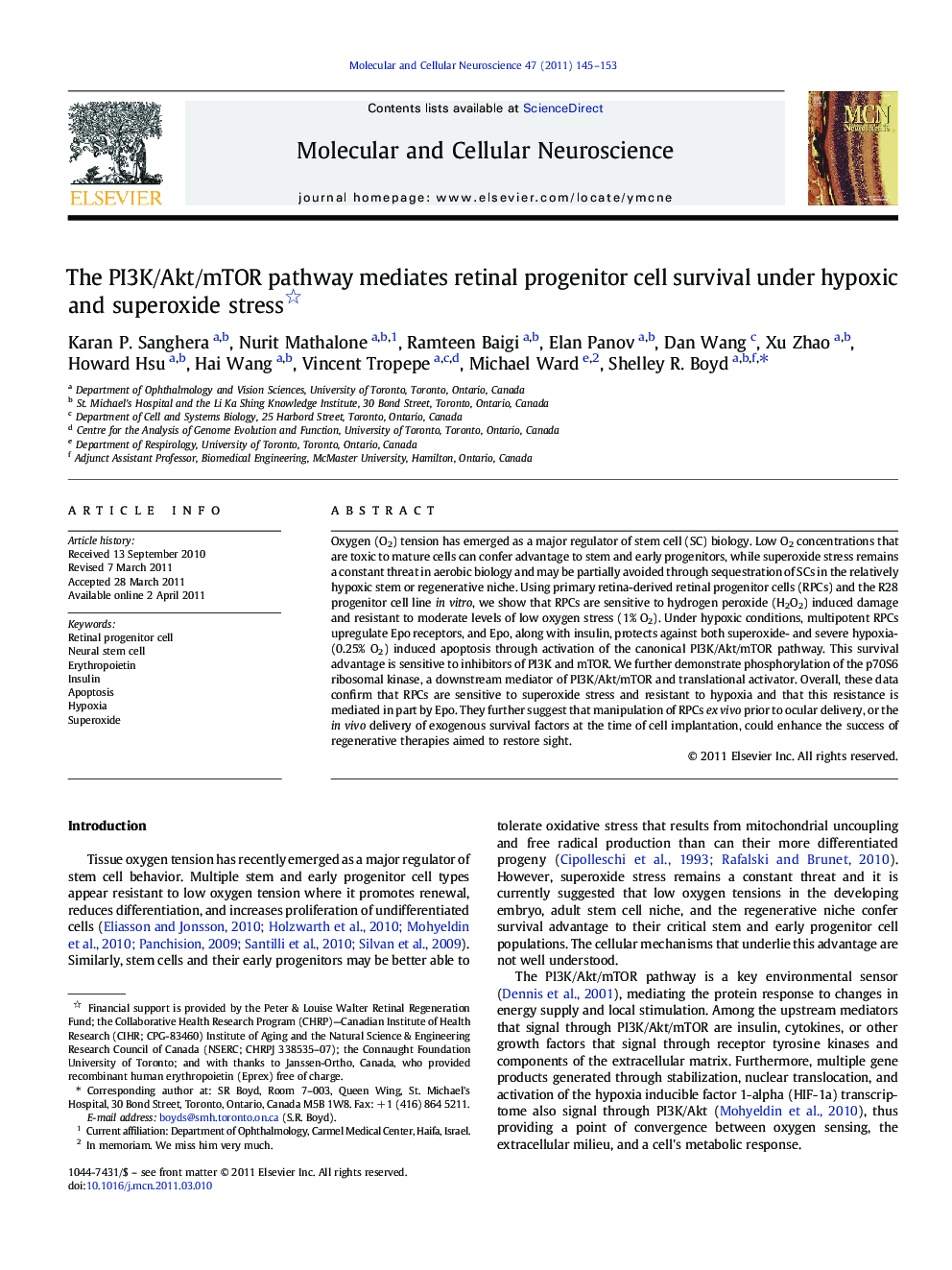| Article ID | Journal | Published Year | Pages | File Type |
|---|---|---|---|---|
| 10956674 | Molecular and Cellular Neuroscience | 2011 | 9 Pages |
Abstract
Oxygen (O2) tension has emerged as a major regulator of stem cell (SC) biology. Low O2 concentrations that are toxic to mature cells can confer advantage to stem and early progenitors, while superoxide stress remains a constant threat in aerobic biology and may be partially avoided through sequestration of SCs in the relatively hypoxic stem or regenerative niche. Using primary retina-derived retinal progenitor cells (RPCs) and the R28 progenitor cell line in vitro, we show that RPCs are sensitive to hydrogen peroxide (H2O2) induced damage and resistant to moderate levels of low oxygen stress (1% O2). Under hypoxic conditions, multipotent RPCs upregulate Epo receptors, and Epo, along with insulin, protects against both superoxide- and severe hypoxia- (0.25% O2) induced apoptosis through activation of the canonical PI3K/Akt/mTOR pathway. This survival advantage is sensitive to inhibitors of PI3K and mTOR. We further demonstrate phosphorylation of the p70S6 ribosomal kinase, a downstream mediator of PI3K/Akt/mTOR and translational activator. Overall, these data confirm that RPCs are sensitive to superoxide stress and resistant to hypoxia and that this resistance is mediated in part by Epo. They further suggest that manipulation of RPCs ex vivo prior to ocular delivery, or the in vivo delivery of exogenous survival factors at the time of cell implantation, could enhance the success of regenerative therapies aimed to restore sight.
Related Topics
Life Sciences
Biochemistry, Genetics and Molecular Biology
Cell Biology
Authors
Karan P. Sanghera, Nurit Mathalone, Ramteen Baigi, Elan Panov, Dan Wang, Xu Zhao, Howard Hsu, Hai Wang, Vincent Tropepe, Michael Ward, Shelley R. Boyd,
